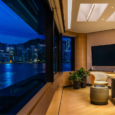The Philippines is mostly known for its pristine beaches that people from all over the world frequent. But it also has a lot to offer to people who enjoy going up mountains and viewing the world from above. This is why tourists also visit the Philippines for different hiking opportunities.
If you aren’t a hiker yourself, you might be wondering why some of your friends take pride and joy in taking the hard and long routes over a mountain. If the thought of it scares you, just take comfort in the fact that your adventurous hiker friends have some legitimate reasons as to why they continue to support hiking tourism in the Philippines.
Hiking Destinations for Newbies
Getting into hiking might be daunting for some people. Luckily, there are several hiking spots in the Philippines that are suitable for beginners! Here are some of them:
Mt. Pinatubo
Mt. Pinatubo was once an active volcano. Since becoming inactive, it has slowly gained popularity, particularly with newbies due to its unique landscape. It has also become a popular hiking spot for beginners in the Philippines due to its relatively easy trail and stunning views of the crater lake. The hike to the summit takes around 2-3 hours and is suitable for all fitness levels. However, hikers should still take necessary precautions and prepare for the weather conditions.
Mt. Manalmon
Mt. Manalmon is recommended for newbies as it only takes about forty minutes to an hour to hike. Besides that, hikers can also try various activities in Mt. Manalmon such as caving or spelunking, crossing the famous monkey bridge, and cooling down by swimming in the Madlum River.
Mt. Batulao
Another popular mountain hiking destination for beginners in the Philippines is Mt. Batulao. It has a relatively easy trail and picturesque views of the surrounding mountains and nearby coastlines. The hike to the summit takes around 2-3 hours and offers a variety of landscapes, including lush forests and rolling hills. Hikers can also enjoy camping and other outdoor activities in the area.
Mt. Pulag
While quite challenging, Mt. Pulag can still be conquered by beginners with the right mindset and preparation. It has challenging terrain and high altitude, and the hike to the summit can take 8-10 hours and requires a good level of fitness and endurance.
Mt. Daraitan
One of the most popular mountains to hike in Rizal for beginners is Mount Daraitan in Barangay Sampaloc. The trail of this mountain requires hikers to use both their hands and feet, with portions approaching 70-degree inclines! The challenging ascent takes up to 5 hours but the view up the summit is truly worth it.
Mt. Sembrano
Aside from the recently constructed Wind Farm in Pililla, Mount Sembrano is another one of this municipality’s exciting destinations for a day of Rizal mountain hike. Unlike the previously mentioned mountains, Mount Sembrano has a fairly easy trail where a guide is not mandatory.
Mt. Tagapo
If you’re planning a hiking trip in Rizal, you should consider adding Mt. Tagapo to your list. It is a great training ground for beginners, as the trail is made up of several major inclines. While the trek is relatively short, it is admittedly exhaustive, often necessitating more than the recommended two-liter of water.
Masungi Georeserve
For those looking for a unique hiking spot in the Philippines, you should try going to the Masungi Georeserve Discovery Trail. Although it isn’t a mountain, it can still provide you with an extraordinary hiking experience and give you the training you need for more challenging hikes. Just remember to eat your breakfast (or lunch if it’s an afternoon trek). Bring water. Wear comfortable clothes.
Snacks are allowed on the trail as long as you don’t litter. There won’t be any bathroom breaks in the midst of trekking, but you’re free to use their bathrooms at the start and end of the trail.
How to Plan Your Next Hiking Trip
Planning a hike with your friends is an exciting idea. You have all the freedom to schedule your day and add activities that you know your group will enjoy.
However, if you’re still a beginner, it’s best to have a guide or get a tour package for your trip. Doing so will allow you to stay safe throughout your trip and avoid any problems. Guides are knowledgeable of the area you’re hiking and can guide how to tackle the trail safely and more efficiently. You’re also less likely to get lost in the mountains with a guide.
Here are some sample guided hike trips that you can try with your friends:
Pinatubo Crater Lake Day Trip
Mt. Pinatubo erupted in a very violent manner back in the ‘90s. It spewed out an ash cloud that covered the entire country and brought on “ash snow” throughout Manila and the rest of the Philippines. The ash, also known as “Lahar,” had taken over our world for a moment, but now has created a breathtaking world of its own. You can find this exotic environment if you’re brave enough to take a trip back to the ashes of Mt. Pinatubo, and if you do, you’ll find a very beautiful surprise waiting for you at the top of her crater.
A day trip/leisure hike up Mt. Pinatubo to see and swim in its crater lake would usually start at around 3 am when you leave Manila. You’ll arrive at the “Spa Town” at around 6 am, just in time to beat the crowds that arrive at 7 am. You’ll find a line of 4×4 all-terrain vehicles (ATVs) that will take you on your first adventure.
Tourists are not allowed to walk/hike this first leg of the trip as the “ash terrains” are too dangerous to tour. So, a 90-minute ride on a 4×4 ATV is required for safety.
Your driver will usually stop at prime spots along the Pinatubo Lahar path for you and your friends to take pictures. An ATV can usually fit about 5 people comfortably. Along with your driver, you’ll also have a tour guide to assist you in reaching the crater lake.
After the all-terrain ride through the lahar/ash terrains of this new Pinatubo land, you’ll arrive at the base of Mt. Pinatubo. From here, it’s about a 45-minute hike to the top. Upon reaching the summit, you’ll be rewarded with a view that few can compare to.
After soaking up the view, you take a climb back down to touch the healing waters of the crater lake. They say the healing properties of the volcano with the high minerals are very good for the skin. So, take a dip!
Mt. Batolusong Day Hike
Mt. Batolusong is considered a “beginner’s mountain”, with just two to three steep sections that are more than manageable for anyone with an active lifestyle. As it was relatively near the meet-up point in Ortigas CBD, you will be headed towards Tanay, Rizal (where Mt. Batolusong is) a bit after 4 am.
You can then reach the jump-off point shortly before 7 am. After a short get-to-know session with everyone, as well as an important briefing on the LNT (“leave no trace”) principles by your guide, you can set off for Mt. Batolusong!
The first part of the trail is relatively flat, through the local village. The next part is through a more wooded trail. The forest trail had steep sections, and from a part of the trail midway up was one of the better views of a “sea of clouds”.
Mt. Batolusong is not a big mountain by any standards, but the geography of the area meant that it had a valley and this was where low-lying clouds get trapped during hot days. Thus, you will be treated to a misty, almost mysterious view of clouds obscuring the village below.
You will then proceed to the highest point of your destination, Duhatan Ridge. Although you might be able to see the summit from where you are, it’s not recommended to head there as the trails might be unsafe for beginners. Also, it supposedly did not afford any spectacular views.
After taking pictures, you can head down for a side trip to Kay-ibon Waterfalls, touted as one of the main attractions in the area. After the waterfalls, it is a straightforward 20-minute hike back to the main road, where your vans will pick you up shortly after.
Mt. Nagsasa Day Hike
Mt. Nagsasa is located in Zambales, north of Manila. Taking a trip there would take about four hours. You’ll also be required to register at a police station. This was done to make sure the authorities know who the hikers are (in case a search-and-rescue was ever needed) and that you have the proper permits.
The jump-off point for this day hike is Sitio Cawag. After reaching the area, your guide will give a short introduction to the trip and hand out IDs. You’ll also have a short getting to know each other session and a short talk on the “Leave No Trace” principle for outdoorsmen. This briefing is very important, and no hike organizer should leave this out. You’ll then start to trek before the break of dawn.
Mt. Nagsasa features grassy trails with minimal elevation along the way to the summit. For anyone who works out regularly, this hike is not too challenging. There are hardly any locals along the trails, so it will be a quiet trek.
The summit is accessible after reaching a ‘shoulder’ along the trail; the way up is steep, and some participants can choose to stay at this photo-op area. Some of the more adventurous ones can take the extra challenge and go all the way up to the summit, for a gorgeous view of the secluded but beautiful Nagsasa Cove.
You’ll then go back down, a quick downhill section followed by flat terrain. In just a couple of hours, the terrain change was in the extremes: mountains behind you and sandy beach in front. You can then spend several hours lounging around the beach and taking a dip in the ocean.
To go back to your private vehicles, you can ride a boat from Nagasa Cove to Pundaquit. It will be a one-and-a-half-hour boat ride through slightly choppy waters, but it will be a great opportunity to admire the beautiful coastline of Zambales and marvel at the scale and beauty of our very own Philippines.
Mt. Ugo Hiking Trip
Mt. Ugo, at 2150 meters above sea level, is considered a “moderately challenging” trail, as it is hiked over two days (though a very long and very fast day hike is possible). It’s recommended to spread the adventure over two days to make sure you enjoy the beautiful sights and sounds of Mt. Ugo.
The usual method of hiking Mt. Ugo (sometimes spelled “Ugu”) is a traverse. From Kayapa, you would hike up to the summit and back down, finding yourselves in Itogon, Benguet. It’s a long journey of over thirty kilometers on rough roads and mountain trails!
Before starting, your guides will brief you on the long hike ahead, as well as the customary reminder to the participants on the “Leave No Trace” principles. Then, you’ll set off for a local public school, which was to act as your night’s base camp.
Throughout the trail, you’ll get to enjoy beautiful open views of the mountain ranges; the Mt. Ugo trail is known to offer amazing mountainside views and wide, well-maintained pine forest trails. A little over eight hours later, you’ll reach the public school.
Before dawn the next day, you’ll tackle the hardest part of the adventure so far: a steep ascent to the summit, followed by a long and arduous trek along the mountainside trail. The trip is over nineteen kilometers long, and you will set off slightly before 5 am.
After a quick visit to the (crowded) summit, where campers were packing up, you will set off towards the exit point, which is still over six hours away. The trek down is relatively straightforward: not too steep but very, very far and somewhat exposed. So, make sure to bring sun protection!
Preparing for a Hiking Trip
Going on a hike with your friends does not only involve creating a schedule and finding a guide. You must also make sure you have everything you need for your trip. To help you prepare, here is a mountain travel guide for your next adventure.
Weatherproof Clothes
What you need to wear on a hiking trip are weatherproof clothes that will keep you warm and comfortable. The weather is unpredictable, so you have to be prepared.
A jacket that will protect you from the cold, as well as a raincoat. Gloves, extra socks, leggings/thermal underwear, and a scarf/beanie are also a must unless you have a high tolerance for cold.
Packs
Invest in a pull-out rain cover, which is essential for keeping your pack dry. North Face’s Flight series is a good choice. Columbia also has good day packs. If you’re on a budget, just borrow, or get Tribu, Sandugo, or Conqueror, which are cost-effective and of good quality.
Good Pair of Shoes
The shoes debate on hiking boots vs. trail shoes is a never-ending one. It’s a highly personal decision, and you will only really know what’s best for your needs after going through (sometimes painful) experiences. Just make sure that what you choose is durable and offers enough protection.
Energy Bars
Something to keep you going during the hours and hours of hiking.
Water
Nothing like good old H2O. You don’t need to bring more than a 1 or 2L thermos or platypus as there are fresh mountain springs to refill from along the way.
Headlamp
This is essential for a dawn hike to the summit. They provide hands-free illumination in low-light conditions, allowing you to navigate trails, set up camp, and perform other tasks safely and efficiently.
Food
Food is necessary for hiking because it provides the energy and nutrients that you need to maintain your strength and endurance on the trail, helping prevent fatigue and ensuring a safe and enjoyable experience.
Tent and Sleeping Bag
A tent and sleeping bag can serve as your shelter and provide warmth, allowing you to rest and recharge for the next day’s hike, even in remote and rugged terrain.
Go on an Adventure of a Lifetime
Now that you’ve learned about the different hiking spots in the Philippines and know what to bring to your trip, you can start planning your adventure! Whether you go with friends or with your family, make sure to have a blast and take time to appreciate the stunning views from above.




